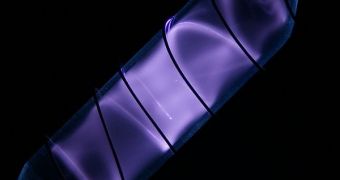The goal of producing electricity through renewable, clean methods has been with science for many years, but it has taken on new significance over the past couple of decades. The threats of global warming and climate change have placed more emphasis on deriving electricity from the Sun, wind, Earth's heat and so on. Another approach is to use microbes and bacteria, and this is precisely what researchers at the Arizona State University are trying to accomplish. They recently managed to develop a new, advanced method for enhancing the efficiency of clean energy production.
The power of microorganisms can be harnessed in such a manner that the cultures produce large amounts of electrons, which can then be captured and used as electricity. However, there are some large obstacles facing this field of research, such as, for example, the fact that microbes and bacteria at this point have a fairly reduced energy production efficiency. This is precisely the issue that the new research addresses. The experts behind it are based at the ASU Biodesign Institute, and were led by expert Dr Prathap Parameswaran.
Microbial electrochemical cells, commonly referred to as MXC, can use bacteria's respiration processes as a source of electrons. But these instruments can also be modified with relative ease to host a process known as electrolysis, which breaks down water and forms hydrogen. At this point, this chemical is mostly produced by using fossil fuels such as natural gas. If sufficient amounts can be produced from alternative sources, then there would be no incentives for governments and people to purchase fuels based on these harsh, environmentally-damaging compounds. Hydrogen could become the norm in renewable, clean fuels, given that methods to produce it in sufficient quantities are developed.
In MXC, the microorganisms are grown at the anode, the positive end of a battery. The bacteria can consume almost anything, producing negatively-charged electrons. These particles then go on to combine with positively-charged protons produced at the cathode, to produce hydrogen gas. “The reactions that happen at the MEC anode are the same as for a microbial fuel cell which is used to generate electricity. The final output is different depending on how we operate it,” explains Parameswaran. “I think over the next 5-10 years the community will bring a lot of information that will be really helpful and that will lead us to good applications,” concludes ASU expert and study coauthor Cesar Torres. Details of the findings appear in the advanced online issue of the journal Bioresource Technology.

 14 DAY TRIAL //
14 DAY TRIAL //